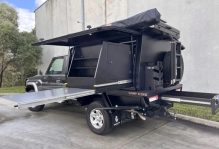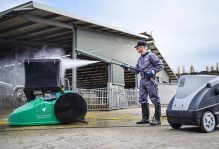Suggested Bus Maintenance Tips To Follow
Owning a bus is a serious thing. Everyone willing to enter in the bus business can buy a bus, but not all will pay attention on proper maintenance which is crucial when it comes to ensuring safety and high profits. Too often, bus owners ignore regular maintenance, which results in terrifying outcomes. These big commercial vehicles have been involved in many accidents that have resulted in lost lives. What’s more frightening is the fact that significant percent of bus accidents have happened due to improper maintenance. Thus, all the moving parts that a typical bus has, need to be regularly checked, repaired or replaced, in order to keep the passengers and other participants in the traffic safe.
Thoroughly Clean Your Bus – Since buses are used for transporting people, the hygiene is very important. The cleanliness of your bus is the first thing your passengers will notice, so you need to make sure it is on the highest level. Check all those small and seemingly unimportant areas to make sure they are clean.
Clean and Protect the Seats – A lot of people seat on your seats on a daily basis, maybe spilling their drinks or just bringing mud on the seats. You need to clean the seats regularly to remove any dirt. If you notice a seat in a poor shape, you can either invest in a good upholster cleaner or change the upholstery if necessary. Also, to protect the seats from future mishaps, use a spray protectant for vinyl or cloth. This procedure done regularly can certainly extend the life of your seats.
Check Your First Aid Kit – While we always hope to never use the first aid kit, it is necessary in particular situations and you need to be sure you have it in your bus all the time. Unfortunately, accident happens often and some do not even involve the bus. Stepped foot, an elbow in the nose or a scratch, or someone is not feeling very well. Not many people consider the first aid kit when they are on the market to buy a bus, but a well-prepared bus driver will need a first aid kit to help the passengers in need.
Inspect the Tires – First, check if the tires are properly inflated. This can save you fuel and extend the life of the tires. If low, inflate the tires at recommended pressure. Then, check the tread. Using a tread depth gauge, ensure you have the correct amount for your specific tires. Look for wear, cracks or bulging and for anything unusual, consult with your mechanic to know if the tires require replacement.




